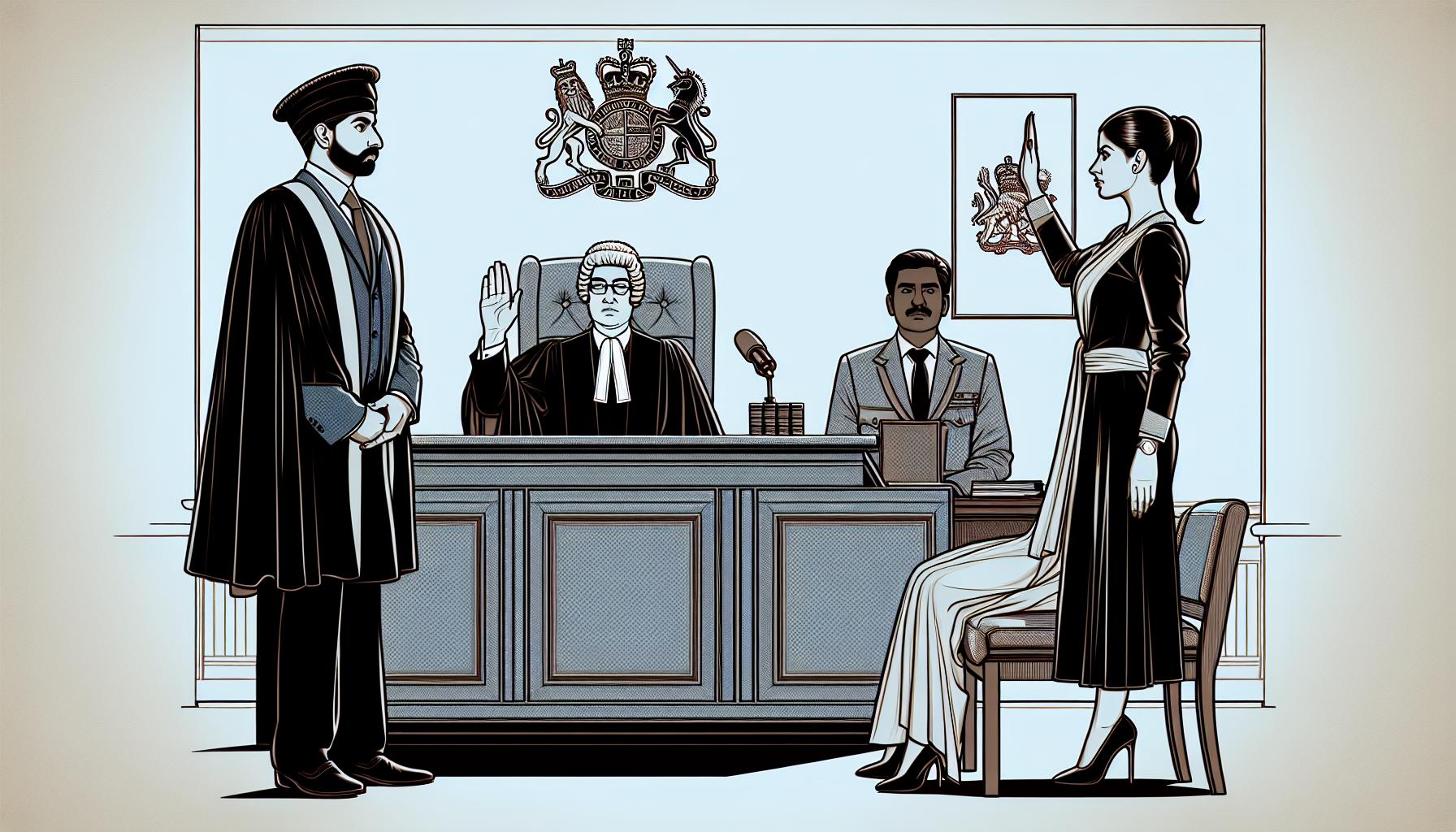Exploring the intricacies of the English language, we often stumble upon the common conundrum: “they’re” or “their”? These homophones can trip up even the most seasoned writers, yet understanding their distinct roles is crucial for clear communication. As we investigate into the nuances of these words, we’ll uncover how a simple apostrophe or letter can alter meaning entirely.
“They’re” is a contraction of “they are”, often used to describe actions or states. In contrast, “their” denotes possession, indicating something belongs to them. Mastering these differences not only enhances our writing but also boosts our confidence in conveying precise messages.
Let’s explore practical examples and tips to ensure we never confuse “they’re” with “their” again. By the end, we’ll have the tools to tackle these tricky terms with ease, making our writing more polished and professional.
Key Takeaways
- Understanding the difference between “they’re” (a contraction of “they are”) and “their” (indicating possession) is essential for clear communication.
- Proper use of “they’re” occurs in informal settings and describes actions or states, while “their” denotes ownership and serves as a gender-neutral pronoun.
- Common errors, such as using “their” instead of “they’re” or vice versa, can be avoided by applying substitution tests and identifying possession in sentences.
- Enhancing skills with targeted practice exercises further solidifies command over these terms, aiding in more precise and professional writing.
- Mastery of “they’re” and “their” significantly boosts English proficiency, especially important for business communication and preparation for exams like IELTS and TOEFL.
Understanding the Differences
When using “they’re” and “their,” understanding the nuances matters. These homophones sound similar but serve distinct functions in sentence structures.
Definition of They’re
“They’re” combines “they” and “are.” It describes states or actions. For example, in the sentence “They’re heading to the market,” replacing “they’re” with “they are” clarifies the usage. This contraction finds its place in informal contexts. Recognising “they’re” helps us engage in smoother conversations.
Definition of Their
“Their” signifies possession by more than one individual. It, hence, showcases ownership. In sentences like “Their house overlooks the park,” “their” indicates who the house belongs to. Also, “their” functions as a gender-neutral pronoun. For example, “Someone left their bag at the cafe” highlights this role. Correct usage strengthens writing clarity.
Common Mistakes
Confusion arises when “they’re” and “their” interchange incorrectly. Consider the sentence “Their going to the store”; here “their” should be “they’re.” Overcoming these errors enhances our writing precision and editorial professionalism. By integrating these distinctions into our English learning, we can improve and refine our language skills.
Contextual Usage

Understanding the correct usage of “they’re” and “their” enhances our command over English, whether for daily communication or advanced English proficiency exams like IELTS or TOEFL.
Examples of They’re in Sentences
“They’re” contracts the phrase “they are.” Examples show how easily this contraction fits into sentences. When someone says, “They’re working on a new school project,” we can replace it with “They are working on a new school project,” and the meaning remains unchanged. Consider the sentence, “The cat ran away and they’re offering a reward”; here, “they’re” indicates the action being taken by a group or individuals. Hearing that “they’re both retiring after this school year” shows its use in expressing future plans. Finally, “Tell the kids they’re going to be in trouble if they don’t finish their assignments” uses “they’re” to highlight accountability for actions.
Examples of Their in Sentences
“Their” denotes possession and is the third-person plural pronoun. When we observe “Ann and Paul studied for their exam,” it indicates ownership of the exam. In the statement, “It was their idea to visit the haunted house that fateful night,” “their” clarifies whose idea it was. “While Martha and Vinny were on vacation, we dog-sat their two poodles” reveals ownership of the dogs. The sentence “The visiting team won the game easily. Their defence was just too strong” uses “their” to attribute the success to the team’s defence. Mastery of such distinctions can aid us in achieving greater clarity and professionalism in our English language skills, benefiting pursuits in business English and language immersion.
Tips for Correct Usage
Understanding the correct usage of “they’re” and “their” enhances our writing and communication skills. These tips aim to clarify common confusions and provide straightforward guidance.
Rules to Remember
- Replacement Test: Substitute “they’re” with “they are” in a sentence to check for correctness. If the sentence still makes sense and fits contextually, then you’ve chosen correctly, such as in “They’re finishing their project.”
- Possession Identification: Identify the noun that “their” replaces to determine ownership. For example, in “Their English course materials are comprehensive,” “their” clearly indicates belonging.
- Gender-Neutral Usage: Remember, “their” can serve as a gender-neutral pronoun. It’s useful in sentences like “Someone left their umbrella at the IELTS centre,” where the gender of the umbrella’s owner is unknown.
Practice Exercises
Enhance your understanding of “they’re” and “their” through targeted exercises. This practice solidifies the rules and helps prevent common mistakes.
- Sentence Substitution: Write sentences using “they’re” and “replace with “they are.” Assess if the sentence retains its meaning, like “They’re attending a Language Immersion workshop.”
- Possession Exercise: Craft sentences that appropriately use “their” to express possession. For example, “Their business English skills are improving,” indicating growth in language proficiency.
Integrating these exercises aids in mastering “they’re” and “their” distinctions. Whether learning English through courses or preparing for exams like TOEFL, clear usage bolsters confidence and professionalism.
Importance in Written Communication
Using the correct form of “they’re” or “their” ensures clarity and precision in our written communication. Misusing these terms often leads to confusion, particularly in contexts like business English or while preparing for exams such as IELTS and TOEFL. Accurate language is crucial for clear expression and understanding between parties.
In professional settings, mixing “they’re” and “their” can undermine the professionalism and accuracy of our writing. This precision is not only vital in international exams but also crucial when learning English through language immersion programmes. For instance, substituting “they are” for “they’re” provides clarity in sentences describing actions, like “They’re updating their business strategy.”
For those undertaking English courses, mastering these differences will help build confidence in using the language effectively. This nuance of language skill plays a significant role, especially in environments where English is the primary medium of communication. Ensuring correct usage can enhance both written clarity and oral communication in any setting, contributing to more effective interaction and understanding.
Conclusion
Mastering the differences between “they’re” and “their” is crucial for anyone aiming to improve their English communication skills. By understanding their distinct roles and practising their correct usage, we can enhance both our written and spoken language. These small yet significant distinctions can greatly impact our professionalism and clarity in various contexts.
Let’s commit to integrating these insights into our daily communication. By doing so, we not only boost our confidence but also ensure our messages are understood as intended. Whether for academic pursuits or everyday conversations, getting “they’re” and “their” right is a step towards more precise and effective communication.
Frequently Asked Questions
What is the difference between “they’re” and “their”?
“They’re” is a contraction of “they are” and is used to describe actions or states, such as “They’re going to the store.” “Their” indicates possession and is used to show ownership, as in “Their car is parked outside.” Understanding these differences is crucial for clear communication and professional writing.
Why is it important to distinguish between “they’re” and “their”?
Proper usage of “they’re” and “their” ensures clarity and precision in communication. Misusing these terms can cause confusion and diminish the professionalism of your writing, especially in business or academic settings.
Can “their” be used as a gender-neutral pronoun?
Yes, “their” can function as a gender-neutral pronoun. It is often used when the gender of a person is unknown or when referring to someone in a non-binary context. Example: “Someone forgot their umbrella.”
How can I test if “they’re” is used correctly in a sentence?
You can substitute “they’re” with “they are” to check its correctness. If the sentence still makes sense, then “they’re” is used correctly. For example, “They’re planning a trip” becomes “They are planning a trip.”
What are some tips for mastering the use of “they’re” and “their”?
Practise identifying possession with “their” and use the substitution test for “they’re.” Engage in exercises, like crafting sentences, to reinforce understanding. Regular practice helps prevent common mistakes and boosts confidence in using these terms correctly.
How does mastering “they’re” and “their” impact performance in language exams like IELTS or TOEFL?
Accuracy in using “they’re” and “their” is vital for language exams, which assess grammatical proficiency. Correct usage demonstrates a strong command of English and contributes to achieving clearer written and oral communication in these tests.
What are practical exercises for improving usage of “they’re” and “their”?
Engage in sentence substitution exercises, where you replace “they’re” with “they are” and identify possession using “their.” Create sentences that illustrate correct use in various contexts to reinforce learning and avoid common errors.
What are common mistakes people make with “they’re” and “their”?
A frequent error is using “their” in place of “they’re” or vice versa, leading to confusion. For example, writing “Their going to the park” instead of “They’re going to the park.” Being mindful of their distinct roles helps avoid such mistakes.



